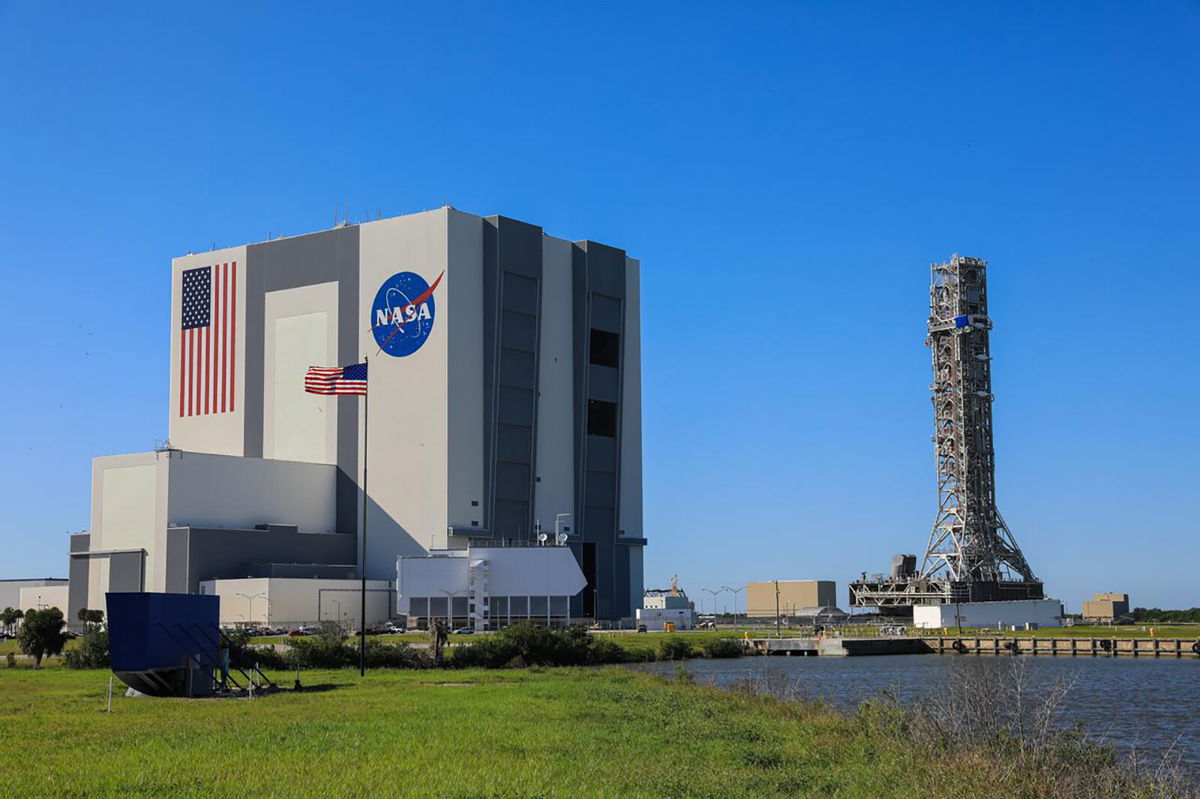NASA’s Artemis 1 final prelaunch test delayed until March

NASA's Artemis 1 final prelaunch test delayed until March. Pictured is the Artemis I mission at NASA's Kennedy Space Center in Florida on October 30
By Ashley Strickland, CNN
The final prelaunch test of Artemis I, an uncrewed mission serving as the first step of NASA’s ambitious program to return humans to the moon, has been delayed until mid-March, according to the agency. This could also push the actual launch of Artemis I to April or May.
The mission’s Space Launch System rocket, NASA’s most powerful one yet, will be topped by the Orion spacecraft when it rolls out to Launch Pad 39B at NASA’s Kennedy Space Center in Florida next month for testing. This test, called the wet dress rehearsal, was originally scheduled for mid-February.
The wet dress rehearsal includes running through the full set of operations to load propellant into the fuel tanks and a launch countdown — basically everything necessary for a launch without actually launching.
The rocket and spacecraft stack stands 322 feet (98 meters) tall and it’s currently housed inside the Vehicle Assembly Building. If the test is successful, the stack will go back into this facility until it’s ready to launch. The results of the wet dress rehearsal will determine when Artemis I launches.
Currently, there are two potential launch windows for Artemis I. The first is between April 8 and 23, and the second is between May 7 and 21. In October, NASA officials said there are opportunities for Artemis I to lift off the pad between March 12 and 27 and between April 8 and 23.
“While the teams are not working any major issues, NASA has added additional time to complete closeout activities inside the VAB prior to rolling the rocket out for the first time,” according to a statement from the agency. “Engineers are conducting final integrated tests of Orion and SLS along with the ground equipment, prior to rolling the rocket and spacecraft to the launch pad.”
Tom Whitmeyer, deputy associate administrator for exploration systems development at NASA Headquarters in Washington, said the team is taking time to be careful as they work through a long list of tasks before the stacked vehicle is ready for the final test.
“This is the part where we’re closing things out and getting ready to launch, and there’s a lot of activities associated with that,” Whitmeyer said. “Some of them are unique to our rocket and some are unique to the fact that this is an uncrewed test flight.”
Over the last few months, teams have been installing and testing various components and instruments on the vehicle.
“We’re taking it one step at a time, we’re doing it very meticulously and we’re proud of the progress that we’ve made,” said Mike Bolger, NASA’s Exploration Ground Systems program manager at Kennedy Space Center. “So we’re finding that right balance: Continuing to push to get this launched as soon as we’re ready, but not before.”
The Artemis program has experienced a multitude of delays. The mission was originally scheduled to launch in November, but delays due to the pandemic, storms like Hurricane Ida and other factors have drawn out the mission time line.
During the flight, the uncrewed Orion spacecraft will launch atop the SLS rocket to reach the moon and travel thousands of miles beyond it — farther than any spacecraft intended to carry humans has ever traveled. This mission is expected to last for a few weeks and will end with Orion splashing down in the Pacific Ocean.
Artemis I will be the final proving ground for Orion before the spacecraft carries astronauts to the moon, a thousand times farther from Earth than where the space station is located, said Cathy Koerner, Orion program manager at NASA’s Johnson Space Center, in October.
After the uncrewed Artemis I flight, Artemis II will be a crewed flyby of the moon and Artemis III will return astronauts to the lunar surface, putting a woman and person of color there for the first time. The time line for the subsequent mission launches depends on Artemis I.
The-CNN-Wire
™ & © 2022 Cable News Network, Inc., a WarnerMedia Company. All rights reserved.